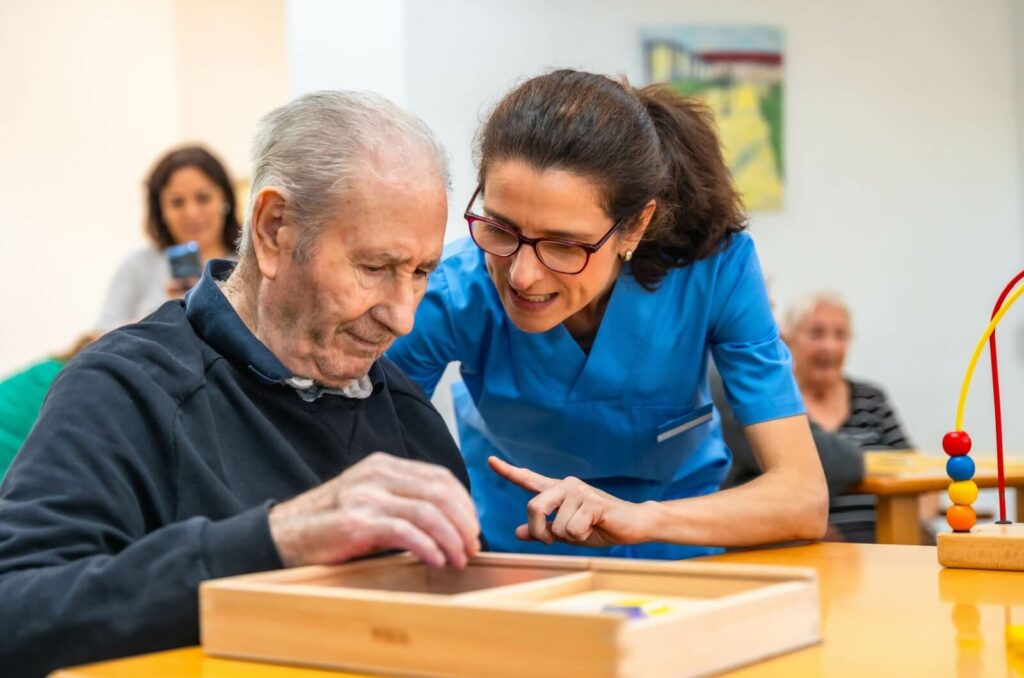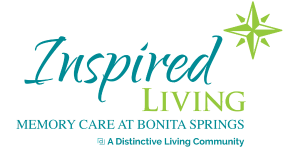Key Takeaways
- Memory care provides specialized, 24-hour support for individuals with changing cognitive needs.
- Key signs to consider include challenges with daily tasks, increasing safety concerns, and shifts in mood or behavior.
- Choosing a community involves assessing the environment, staff interactions, and asking direct questions about care.
- A smooth transition can be supported by keeping the move simple and sharing familiar routines with the care team.
Deciding on the right level of support for a loved one is a significant step. You want to see your loved one thrive in an environment that understands their needs, especially as those needs change over time.
Full-time memory care often becomes the next step when a person’s cognitive changes begin to affect their safety, daily routines, and the well-being of their family caregivers, who may be experiencing signs of burnout.
Understanding the Difference: Assisted Living and Memory Care
It’s common to group all senior living options together, but they offer different levels of support. Knowing the distinction between assisted living and memory care is a helpful first step in finding the right fit for your family member.
The Goal of Assisted Living
Assisted living communities are designed to promote independence while offering help with daily activities. Residents have the freedom to perform most daily activities without assistance, with tailored support in specific areas, including medication reminders and personal care.
An assisted living option is suitable for individuals who don’t need round-the-clock supervision but could use a little extra support.
Specialized Support in Memory Care
Memory care provides a more focused approach for individuals with changing cognitive needs.
These communities offer 24-hour supervised care and memory-focused activities for those with conditions like Alzheimer’s disease. The layouts are designed to be easy to navigate, helping reduce confusion and wandering.
Key Signs It May Be Time for A Change
Recognizing when a higher level of care is needed can be challenging. Certain changes in behavior and routine can indicate that it’s time to consider a transition to a memory care community.
Challenges with Daily Living And Personal Care
You may start to notice difficulties with day-to-day routines, often referred to as activities of daily living (ADLs). These challenges can be an early sign that more support is needed:
- Forgetting to eat or drink regularly
- Neglecting personal hygiene, such as bathing or dressing
- Difficulty managing household tasks like cleaning or laundry
Increasing Safety Concerns
Your loved one’s safety is always a top priority. When you notice new safety risks, such as a loved one starting to wander and get lost, it can be a clear sign that their current living situation is no longer the right one.
- Leaving the stove on or misusing appliances
- Experiencing more frequent falls or unexplained bruises
- Struggling to manage medications correctly
Changes in Behavior and Mood
Shifts in personality and mood can also signal the need for more specialized support. These changes can be difficult for both your loved one and you.
- Withdrawing from social activities or hobbies
- Showing increased agitation, confusion, or anxiety
- Having trouble expressing thoughts or needs
The Impact on Family Caregivers
Supporting a loved one is rewarding, but it can also become overwhelming. If you’re feeling stressed or exhausted, exploring other options is a positive step. Memory care and short-term respite care can provide support for both your loved one and you.
What to Look for in A Senior Living Community
When you start exploring senior living options, you’ll want to find a community that feels right. Focusing on a few key areas can guide your search and help you find a place where your loved one can feel comfortable and engaged.
A Supportive and Engaging Environment
Observe the community during your visit. Do the residents seem engaged and comfortable? Is the staff warm and willing to answer your questions? Look for a clean, well-lit setting that is easy to navigate and promotes social interaction.
Important Questions to Ask
Come prepared with a list of questions to help you understand how the community operates. Review these 10 questions to help you choose a memory care community to help get you started:
- What is the staff-to-resident ratio?
- What training programs do team members complete?
- What are examples of daily schedules and types of activities offered?
- What safety and security measures are in place?
- How do they communicate with families about a resident’s well-being?

Navigating the Financial Side of Memory Care
Understanding the costs associated with memory care is a crucial part of the planning process. While costs vary based on several factors, there are different ways families can plan for this type of senior living. Having this information can make the process feel more manageable.
Typical Costs for Care
The monthly cost for memory care depends on the location and the level of care required. Generally, it is more than assisted living due to the specialized support and higher staff-to-resident ratios involved.
Understanding Payment Options and Medicare Coverage
Families often use private funds, long-term care insurance, or veterans’ benefits to cover the cost. Our team can also help you explore various financial resources that may be available.
While Medicare does not typically pay for room and board, it may cover some health services. It can be helpful to review your specific policies and options.
Making A Smooth Transition to A New Community
Moving to a new home can be a big adjustment for anyone. A few simple strategies can help make the transition to a memory care community a more positive experience.
Keeping the Move Simple
Move-in day can be a busy and emotional time. Try to keep it simple by having just a few close family members help. Once your loved one settles in, the community’s team is there to assist them and help them feel at home.
Maintaining Familiar Routines
A consistent daily routine can help reduce stress and anxiety. Share your loved one’s current schedule, preferences, and favorite activities with the staff.
Personalized information helps caregivers create an individualized plan and connect your loved one with engaging activities that provide a sense of comfort.
A Supportive Path Forward
Deciding when full-time memory care is necessary is a personal journey. By recognizing the signs, asking the right questions, and planning ahead, you can find a supportive senior living environment that meets your loved one’s evolving needs.
At Inspired Living at Bonita Springs, our team is dedicated to providing compassionate, personalized care in a vibrant community. We focus on building connections and fostering joy for every resident.
For those who gave you their all, we are here to help you give them a nurturing and supportive home. Get in touch today to learn more about our approach to memory care or to schedule a personal tour.









